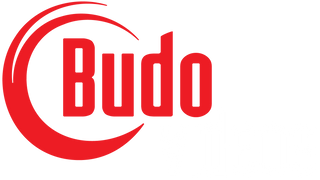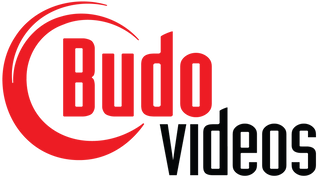Don't Think, Listen to Your Body! Book by Akira Hino
THIS IS A SPECIAL ORDER ITEM
These items can take approximately 1-2 weeks to arrive here before they are ready to be shipped out by the selected courier service. Special order items are not eligible for return or exchange under any circumstances. Please review product details carefully before adding these items to your shopping cart.
Please Note: If you place an order for other items, they will be held and shipped together with the special order item when it is available. Alternatively you can place separate orders so your regular items will be shipped sooner.
This is a comprehensive breakdown of another book by Hino Akira that systematically presents his physical methodology. The title suggests "Reaching 'Master' Level! A Collection of Special Hino Methods!" Here's the structured content:
Core Philosophy: The book emphasizes that everything begins with recognizing "I wasn't doing it right" - a fundamental acknowledgment of one's limitations. It explores the mysteries of martial systems that allow people to become masters even in old age, and how consciousness can actually make the body less rational.
Chapter 1: Maximum Efficiency Body State
1. Flexible Structure is Essential!
- Correct posture and which body parts matter most
- The body's inherent mechanisms as human functions
- Why flexible structures have survived across eras
- How "play" (flexibility range) determines flexible structures
- Ancient Japanese culture already contained cutting-edge flexible structural thinking
- Flexible structural thinking requires considering organic connections of the whole
- Flexible thinking enables dealing with uncertain situations
2. "Sternum" Operation Changes the Body Movement System
- Body mechanics from a structural perspective
- Actual sternum operation and Hino theory
- "Monitoring" and "switching" consciousness states
- Why the spine is important, but it's not about the "spine"!
- Methods for converting full body weight into "power"
- Discovery of "sternum operation" - even athletes don't use muscle strength!
- Being relaxed alone doesn't create connection!
3. Not the Hands! Move the Elbows!
- The greatest challenge: releasing power
- "Elbow movement" to increase upper body freedom
- Elbow control through "elbow strike lessons"
- How elbow control builds precise coordination
- Why elbows are crucial
- Effective strikes through armor
- Linear elbow movement in striking
- Overhead elbow strikes
- Skillful elbow operation seen in Bujinkan's Hatsumi Soke
- Verification of "power conversion" using poles
Chapter 2: How to Generate Power 1 - Spiral
1. Chansi Jin (纒絲勁) - A Coordination System
- Fajin as power transmission
- Chansi Jin as the entry point for sensing power transmission
- Concrete Chansi Jin practice
- Practical phenomena of Chansi Jin
- Elements when Chansi Jin is materialized
- Applications seen in the late Shioda Soke (Aikido)
- Fajin as instantaneous physical coordination
- Arms and legs as terminal organs of the body
- Using abdominal and back muscles to move limbs with the whole body
- How twist recovery generates power
- Verification using partner exercises
2. Create a "Body Ruler"!
- Importance of coordination sensory lines
- How sensation changes movement quality
- Coordination confirmed through sports
- Converting twist recovery into strikes
- Establishing body measurement standards
- Techniques cannot be realized instantly
- Universalization of techniques
- "Cutting metal with wood" through drumming and fajin
- How drum training created collective power
3. Whole-body Connection Hub - Abdominal Sensation
- Understanding that "sensitivity" must be "developed"
- Problems with sensitivity
- Experiencing how "twist recovery" generates power
- Lower body abdominal twisting
- Verification through grappling practice
Chapter 3: How to Generate Power 2 - Weight Transfer
1. Coordination and Knee Relaxation
- Weight transfer conditions: "Lift toes slightly, step firmly on heels"
- First, visualizing weight movement
- Importance of the rear foot
- How stance between both feet is key
2. Footwork that Utilizes Weight Transfer
- Sliding steps don't exist anywhere else in human behavior worldwide
- The meaning of sliding steps
- Actual foot movement
- How footwork determines stance
- Footwork itself becomes penetrating kicks
3. Breaking Balance and Direct Face-to-Face Confrontation
- Understanding movement initiation
- Martial arts as mutual confrontation
- Concrete body movements of "movement initiation"
- Balance breaking in sports
- Risks of using knees rigidly
- Balance breaking practice
Chapter 4: Beyond Consciousness - The Other Side of "Preconceptions"
1. Transcending "Consciousness"
- Knowing the "self that cannot do it"
- Body movement is ultimately an expression of the unconscious
2. The Wonder of the Heart/Mind
- Martial arts as mental training mediated through body movement
- Beyond consciousness
Key Innovations: The book presents Hino's systematic approach to body mechanics, emphasizing sternum operation, elbow control, spiral power generation (influenced by Chinese internal arts), and proper weight transfer. It challenges conventional approaches to physical training by focusing on whole-body coordination rather than isolated muscle development.
The methodology appears to bridge Eastern martial arts principles with modern understanding of biomechanics, creating a comprehensive system for developing what Hino calls "master-level" physical capabilities regardless of age.
About the Author: Hino Akira (born 1948 in Osaka) was selected as an Olympic training athlete for gymnastics through self-study during middle school. He also mastered jazz and martial arts through self-teaching. He currently runs the Hino Martial Arts Research Institute, dividing his instruction into "Martial Arts School," "Body School," and "Martial Zen." He maintains schools in Tokyo, Osaka, and Wakayama while conducting corporate training and lectures.
Language: Japanese
Length: 208 pages
MBHIN7
Couldn't load pickup availability


